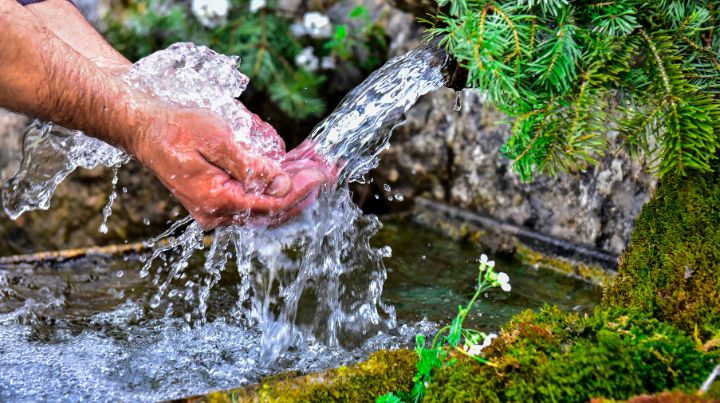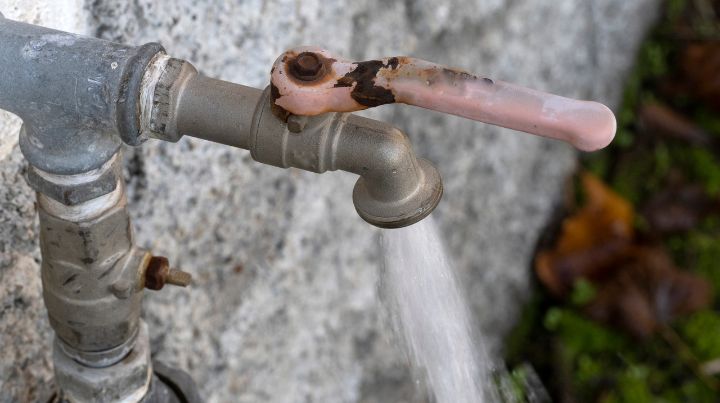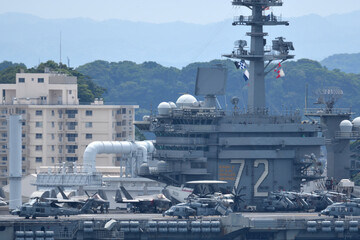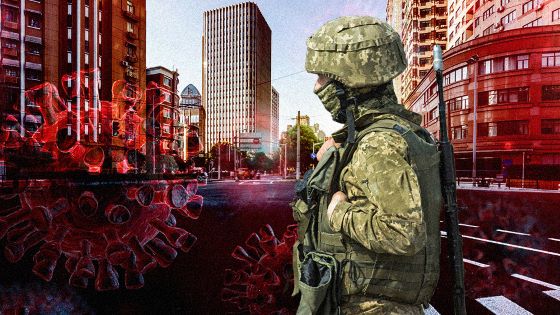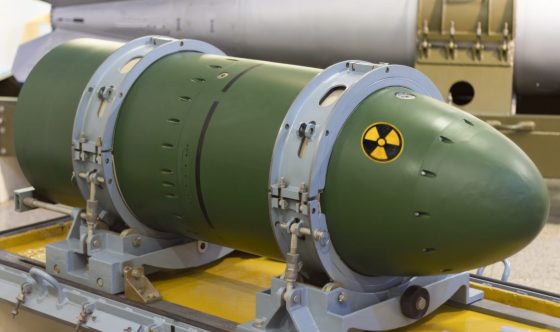Sourcing Water in an Emergency
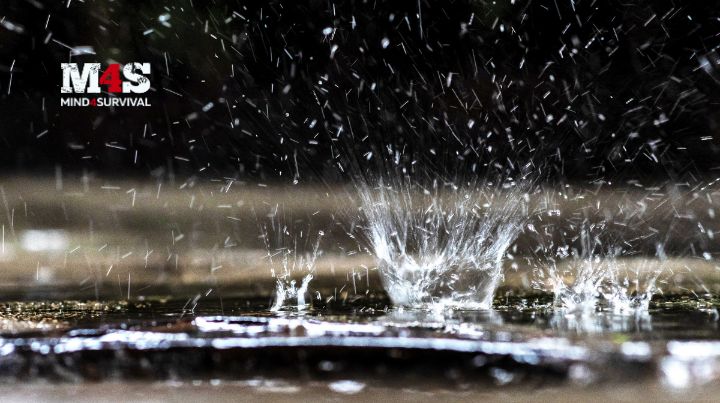
Many threats could cause water to become scarce or even disappear for some time. Particularly in cities where millions live together, the precious liquid gets used for many activities, from personal hygiene to sanitation to food preparation, healthcare, and much more. Sourcing water in an emergency is an essential skill every prepper should consider.
I’m not talking about a full-blown SHTF, but events that occur frequently and can strike anywhere, at any moment: floods, hurricanes, earthquakes, chemical or nuclear spills, leakages, even strikes and attacks (cyber or otherwise) to infrastructure which can cause it to collapse and interrupt supply.
Therefore, one of the best and most helpful survival skills is how to source water in different environments and situations. We must know how and where to find, transport, store, and treat it regardless of where we find ourselves.
Develop Strategies Beforehand
Some preppers think it’s Mad Max and everyone for themselves once SHTF. That’s rarely the case, even in the Third World. There’s no such thing as a vacuum of power. Someone will always take change and control whatever resources are present, be that money, energy, food, or water.
In most cases, particularly in developed and advanced countries, it’s the government and their various armed instances turning the screws on the populace and controlling everything, if necessary, with violence. Look at what happened during COVID-19.
So, whenever water becomes scarce, the authorities step in and do anything to control the situation and avoid mass panic. The population will also take matters into their own hands at different levels, going from self-imposed savings of water to outright violence to get it.
In other words, don’t count on just showing up to the city park with your buckets to get some water from the pond if the situation turns dire. I’ve been through a couple of situations that showed how things run when water becomes scarce, so here’s a short story on a near-SHFT we had going a few years ago to illustrate my point.
What Happens in Real Life
In 2016 and 2017, a severe and prolonged drought put more than a thousand cities in an emergency state here in Brazil. Rivers and reservoirs in 15 states reached the lowest levels in recorded history. That’s uncommon and shows that even a well-irrigated tropical country like Brazil can face issues with water.
During that period, residential and commercial buildings drilled wells to get water for sanitation and other uses. Treated water was heavily rationed, with authorities campaigning for the population to save water however they could. As the situation worsened, the government also started a strict control of water usage.
Non-essential utilization was prohibited. As we know, “essential” is a fluid and abused concept by rulers once they declare an emergency on something, so beware. Those caught watering the lawn or washing their car got fined or even prosecuted. Even businesses that depended on water (e.g., car washes, restaurants, etc.) were forced to drill wells or buy water trucks to keep afloat due to the rationing.
There were other practical consequences. As the reservoirs emptied, the quality of the supplied water deteriorated. That happens quickly, affecting not only the taste but the aspect and purity of the water coming out of taps. At that point, people start to freak out, and authorities panic, though you’ll never see the latter admitted, and governments will vow to the quality of the water even as people start to get sick. Below a certain level, the pumps cannot pull the water, and this is serious because they can collapse and require an overhaul.
Long Recovery
We didn’t reach that point, fortunately, but it was close. Dangerously close. Rain started falling again the following season, and things returned to normal. But that happens slowly, and it took years for the water level to reach “safe” levels again, though people quickly forgot the bad and became complacent again. There was no panic, but the distress and stress levels were high. I’m sure a complete collapse would be catastrophically worse in all aspects.
By then, I had already been doing my street survival training routines for a few years, and one of the main exercises was precisely how to scout and source water in the city. That saved me a lot of trouble and discomfort, I must say. This article reveals my learnings and strategies developed in the urban environment and the wilderness.
Collecting Rainwater
Improvising a rain catchment system is perhaps the most obvious, if not the easiest and most secure, way to source water anywhere. However, that relies on the rain regime, which we have zero control over, so if there’s a prolonged drought, that will have limited effectiveness.
Still, I always recommend having one or more systems in place because rain can come anytime and without warning. Remember, we need a way to collect the water (any surface such as a tarp, rooftop, etc.) and something to store it (vessels, jugs, drums, pots, etc.).
Collecting rain and drilling wells is prohibited in most cities, or it demands a lot of red taping. Don’t count on the authorities permitting those things even during a drought because they will most likely go the opposite way and enforce the prohibition instead. In any case, research the matter.
Most importantly, develop a secretive, hidden system and deployment strategy. Test whatever system you have in place beforehand, during good times, to assess effectiveness and OPSEC for when things get rough. Don’t leave it to chance (this advice suits every preparedness strategy).
Sourcing Water in the Wilderness
As a practitioner of outdoor activities, I also had to learn how to source water in the woods, which is another ballgame. One advantage is the ability to collect from different sources without restrictions or regulations, but there are good and bad practices, so read on:
- Besides rainwater, running water from springs, rivers, streams, and creeks is usually the cleanest and safest. I still recommend that you at least filter and possibly treat it (by boiling or using chemicals), depending on how good and trusted the upstream or source is (more on that below).
- Water flows from top to bottom, meaning we’ll likely find water in valleys. If flowing water isn’t available, move to stagnant water, from lakes and ponds.
- Animals are excellent water finders, so look for trails, footprints, and other signs of their presence – but be careful with predators when collecting the water. Also, beware animals urinate and defecate in places they drink.
- Greener and denser vegetation, fog, and mist indicate nearby water bodies.
- During winter in northern regions, water freezes up and requires some heat source (i.e., energy) to melt down and boil.
- If you plan on using a fiber-type filter such as Lifestraws and Sawyers, remember these may get damaged in freezing temperatures.
- Eating snow is OK if it’s done in the morning before other activities and never before going to bed.
Sourcing Water in the City
In my Street Survival Training book, I dedicate an entire chapter to sourcing water in the urban environment. That’s where I live, and lots of other people as well, so I figured it’s crucial to know various manners of finding and acquiring water during emergencies:
- Cities have lots of water sources, and we must look at all potential ones because it can be trickier than in the wild. In fact, quite a lot of natural resources exist in the urban environment.
- However, aquifers, springs, ponds, rivers, and streams are usually a) contaminated and b) possibly hidden under avenues, buildings, urban equipment or furniture, and other artificial structures.
- Some cities have rivers running through them (that’s the case where I live), though even the cleanest ones can be considered unfit for human consumption unless treated.
- Taking water from public sources is usually forbidden, which tends to become even more strict and heavily enforced during an emergency or even SHTF. Check the legislation in your area before attempting any drills.
- Pools and decorative fountains are common in cities, though they’re not just there for anyone to show up and collect. Also, water may not be present in a drought or other emergency, contaminated from a disaster, or lack of treatment.
- Many buildings pump basin water from underground to avoid pressure build-up that leads to leakages, infiltrations, and other water-related issues. This water is either pumped to a reservoir or dispensed into drainage galleries. In more modern buildings (labeled “green buildings”), it’s used for watering gardens, filling fountains, washing floors, and so on. Often, an external pipe throws relatively clean, clear water towards the curb. Some people here living in the streets show up and collect this water, so it’s a good and usable source if you can find it.
Assessing Water Quality
Water can be contaminated even when it’s crystalline and looks clean. Most harmful contaminants and microorganisms aren’t visible to the naked eye, making it difficult to assess whether the water is drinkable or not. Some general rules may help, but take as a principle that some filtering or treatment is always recommended:
Never drink from a source without first checking on its aspect. While looks may not reveal the actual quality or potability of the water, they’re the first indicator of quality. Also, check for the smell. This can be an even better indicator because pesticides, chemicals, and pollution (among other contaminants) usually have characteristic odors.
Never mix unknown water with good, treated water in the same container.
If you know the direct source to be 100% clean – for instance, a natural spring or river with no upstream contaminants in a wild area- it may be OK to drink it without treatment.
Contaminants
Water from agricultural regions can be free of viruses harmful to humans or pollutants found in urban areas but contaminated with pesticides and other chemicals. It is the same for water from pools, water parks, and fountains (from buildings), which are usually filtered and heavily treated to avoid stagnation and deterioration. I usually run it through a filter with activated charcoal to remove taste, chemicals, and particles.
That said, I admit to drinking from suspected sources occasionally when dehydrated because these may not be as harmful when consumed occasionally. Unlike harmful microorganisms, the problem with these contaminants comes from the cumulative, rather than occasional, consumption.
Rainwater collected in urban centers contains suspended pollutants from the air and the surfaces they run on, like rooftops and pipes. At the very least, it should be run through a suitable filter before consumption, preferably with activated charcoal to remove particles and other chemicals.
Underground, flowing, or stagnant water in the urban environment is polluted and contaminated in one way or another. The sheer presence of humans and human activity, which can carry dangerous viruses, means any water collected should be filtered and treated to become safe for consumption.
Conclusion
In an upcoming article, I’ll be talking about other important aspects of water sourcing and actions that those living in urban areas can take to prepare for shortages, rationing, and different situations: how to build knowledge on the water system that supplies your city, district or neighborhood, how to save water, and tips on treating, transporting and storing water in the town. Stay tuned!


